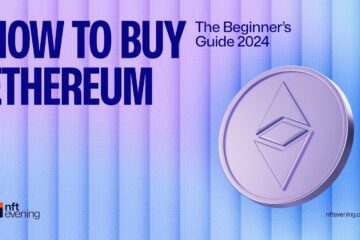Monad Protocol is becoming a strong competitor in the changing world of blockchain. Monad Protocol is a key actor in the blockchain world as it changes. Its goal is to make Layer 1 networks that interact with the Ethereum Virtual Machine (EVM) run better.
Core Pillars of Monad’s Design
The Consensus Engine of Monad—MonadBFT
Monad uses MonadBFT, a pipelined, Proof-of-Stake Byzantine Fault Tolerant consensus mechanism inspired by HotStuff. In this design, the block proposal, voting, and finalization happen in parallel. While one block is being proposed, the previous one is finalized—allowing blocks to reach finality in ~1 second and be produced every 0.5 seconds. This overlapping consensus flow dramatically reduces latency and increases throughput. It also includes tail-fork resistance, minimizing MEV-based reorg risks and improving network stability.


Source: Monad docs
Deferred/Asynchronous Execution
Unlike traditional blockchains, where validators must fully execute each block before moving on, Monad decouples execution from consensus. Validators first agree on the transaction order, then execute transactions asynchronously—often in parallel with voting on new blocks. This “pipelined” model keeps validator hardware busy at all times, increasing performance and minimizing idle compute. It’s a technique borrowed from modern CPU architecture and contributes significantly to Monad’s ability to scale without bottlenecks.
For more: Top 10 Monad Projects to Try for Airdrops


Source: Monad docs
Optimistic Parallel Execution
Monad leverages optimistic parallelism to process multiple transactions at once, provided they don’t conflict. A static code analyzer identifies non-overlapping transactions and runs them in parallel. If conflicts are found, Monad re-executes only the affected parts. This The The system preserves full bytecode-level EVM compatibility, ensuring that existing Ethereum smart contracts can run without any changes. Developers benefit from high throughput and low latency without having to rewrite apps—accelerating adoption.


Source: Prof. Lois Hawkes, FSU
MonadDb: The Purpose-Built State Database
MonadDB is a custom state database designed specifically for the Ethereum data model. It uses SSD-optimized storage for the Merkle Patricia Trie and enables parallel access to blockchain state. This significantly reduces RAM requirements, allowing validators to operate on more affordable hardware, promoting decentralization. By removing reliance on expensive, memory-heavy setups, Monad lowers infrastructure costs for both validators and dApp developers—making the chain more accessible for a broader range of participants.
Local Mempools
Instead of a global mempool, Monad uses validator-specific local mempools. RPC forwards transactions directly to upcoming leaders, enhancing propagation speed and minimising bandwidth usage. This design also reduces the visibility of pending transactions, making front-running and sandwich attacks much harder. For users, the result means better execution and less slippage; for developers, it creates a more secure and predictable environment—especially critical for complex DeFi protocols.
The EVM Bottleneck and Monad’s Innovative Solution
The traditional EVM-based blockchains, such as Ethereum and BNB Chain, process transactions sequentially, even when these transactions are entirely independent of one another. This straight-line way of processing transactions doesn’t make full use of today’s powerful multi-core processors, causing a major slowdown in how many transactions can be handled, no matter how much the agreement methods improve. For instance, Ethereum typically processes only about 10 to 30 TPS. This limitation leads to network congestion and high transaction fees during periods of peak demand.
Monad’s approach to overcoming these limitations is fundamentally different. Instead of relying on Layer 2 solutions to offload transaction processing, Monad aims to optimize performance directly at the base layer (Layer 1). This design choice allows Monad to achieve high scalability natively within a single, monolithic architecture, all while preserving full EVM compatibility. This architectural decision represents a direct challenge to the prevailing Ethereum scaling roadmap, which heavily emphasizes L2s. If Monad successfully delivers on its promises, it could attract developers who prefer a simpler, unified environment over the complexities associated with L2s, such as bridging assets and managing fragmented liquidity. This could cause many developers to prefer building applications that need high performance directly on a Layer 1 blockchain instead of using L2s, giving Monad a big edge over its competitors.
For more: Monad Airdrop Guide: the Easiest Way to Unlock your Rewards
Monad Performance Benchmarks and Real-World Impact
Monad Protocol’s design aims to deliver a step-change in blockchain performance, enabling new categories of decentralized applications.
Unprecedented Throughput and Rapid Finality
Monad targets a throughput of 10,000 Transactions Per Second (TPS) with an impressive finality of approximately 1 second. Some reports even indicate a target of 100,000 TPS and a reported 70,000 TPS in production as of January 2025, following its mainnet launch in late 2024. Block times are designed to be around 0.5 seconds.
This performance represents a substantial improvement over Ethereum, which typically handles 15-30 TPS with multi-minute finality. Monad’s architecture is engineered to scale significantly beyond the capabilities of Ethereum Layer 1 or typical rollup solutions. These high TPS rates and rapid finality are not merely incremental enhancements; they are foundational for enabling “high-fidelity DeFi, DePIN, and payment applications that previously might only exist on platforms like Solana.” This includes supporting real-time order books for decentralized exchanges (DEXs) that can rival centralized counterparts, facilitating high-frequency trading (HFT) directly on-chain, and powering demanding GameFi applications. This improvement solves a big problem with current EVM chains, creating new opportunities for decentralised applications that need quick and constant interactions, which in turn increases the usefulness and potential market for decentralised solutions.
MONAD might be one of the biggest plays of 2024.
Here’s why;
“Bringing parallel execution to the EVM. Layer 1. 10,000 TPS. What will you build without constraints?’@monad_xyz is a new layer 1 blockchain built to process 10,000 TPS with 1s block times and instant finality,… pic.twitter.com/CnHRwE4hax
— mcemmas.eth (@McEmmas) November 19, 2023
Low Transaction Costs and Accessible Hardware Requirements
Monad aims for near-zero gas fees, with a hardcoded base fee of 50 gwei, similar to Ethereum’s EIP-1559, which is burnt. The final fee mechanism is still under development.
The architectural design, particularly the optimizations within MonadDb, allows for lower RAM requirements and enables the use of consumer-grade hardware for validators. Low transaction fees are crucial for driving mass user adoption, especially for consumer-facing applications and microtransactions. High fees on Ethereum have historically pushed many users towards Layer 2 solutions or alternative Layer 1 blockchains. Monad can offer low fees directly on Layer 1 and has accessible hardware requirements for validators, fostering a more economically viable and decentralized ecosystem. Such a solution could attract a broader user base and enable business models that are currently cost-prohibitive on other chains, making it more competitive with traditional Web2 services like PayPal or Venmo.
For more: Monad Ecosystem Map: Best Projects Review
The Driving Force: Team, Funding, and Investor Confidence
The strength of Monad Protocol is significantly bolstered by its experienced founding team, substantial financial backing, and the high level of confidence demonstrated by prominent investors.
Founding Team and Expertise
Keone Hon (CEO), James Hunsaker (CTO), and Eunice Giarta (COO) co-founded Monad Labs. The collective background of the co-founders, particularly their extensive experience in high-frequency trading (HFT) at firms like Jump Trading, is a critical differentiating factor. HFT demands extremely low latency, high throughput, and robust systems, which directly translates to the complex scalability challenges Monad is addressing in the blockchain space.
Table: Monad Labs Founding Team and Key Roles
| Name | Role | Key Background/Experience |
| Keone Hon | Co-founder & CEO | High-Frequency Trading (HFT) at Getco LLC & Jump Trading; Quantitative Developer at Jump Crypto; MIT (CS, Math, Finance, Eng) |
| James Hunsaker | Co-founder & CTO | Senior Software Engineer at Jump Trading; Roles at Goldman Sachs & J.P. Morgan; University of Iowa (CS, Math) |
| Eunice Giarta | Co-founder & COO | Fintech Product Management; Business Development; Rates Derivatives Trader/Analyst; MIT (CS, Management Science, Finance) |
Significant Funding Rounds and Valuation
Monad has successfully attracted substantial financial backing, raising a total of $244 million across multiple funding rounds.
This level of backing for an early-stage platform, where the core technology is still in its nascent stages and unproven at full production scale, suggests that leading venture capitalists are making a significant bet on the team’s expertise and the transformative potential of Monad’s architectural innovations.


Prominent Investors
Monad has attracted a diverse group of prominent investors, including Paradigm, Dragonfly, Coinbase Ventures, OKX Ventures, Electric Capital, Pantera Capital, Brevan Howard Digital, CMS Holdings, Wintermute, Castle Island, Archetype, Bankless Ventures, Galaxy, HTX Ventures, IOSG Ventures, Mirana Ventures, Nascent, Robot Ventures, SevenX Ventures, Animoca Brands, GSR, Big Brain Holdings, and Bodhi Seed.
The quality and diversity of Monad’s investors are highly significant. Firms like Paradigm and Dragonfly are renowned for their rigorous technical due diligence and their ability to provide strategic support within the crypto space. Their involvement brings not only substantial capital but also invaluable industry connections, mentorship, and the potential for future partnerships and liquidity. This network effect can significantly accelerate ecosystem growth and market adoption, providing what appears to be a guaranteed influx of builders and users. This signals to the broader market that Monad is a serious contender with institutional-grade backing, enhancing its credibility and appeal.
 Bitcoin
Bitcoin  Ethereum
Ethereum  Tether
Tether  XRP
XRP  Solana
Solana  USDC
USDC  TRON
TRON  Lido Staked Ether
Lido Staked Ether  Dogecoin
Dogecoin  Figure Heloc
Figure Heloc  Cardano
Cardano  Bitcoin Cash
Bitcoin Cash  Wrapped stETH
Wrapped stETH  WhiteBIT Coin
WhiteBIT Coin  Wrapped Bitcoin
Wrapped Bitcoin  Wrapped eETH
Wrapped eETH  USDS
USDS  Chainlink
Chainlink  Binance Bridged USDT (BNB Smart Chain)
Binance Bridged USDT (BNB Smart Chain)  Monero
Monero  LEO Token
LEO Token  WETH
WETH  Stellar
Stellar  Coinbase Wrapped BTC
Coinbase Wrapped BTC  Sui
Sui  Ethena USDe
Ethena USDe  Zcash
Zcash  Litecoin
Litecoin  Avalanche
Avalanche  Hyperliquid
Hyperliquid  Shiba Inu
Shiba Inu  Hedera
Hedera  Canton
Canton  USDT0
USDT0  sUSDS
sUSDS  World Liberty Financial
World Liberty Financial  Dai
Dai  Toncoin
Toncoin  Cronos
Cronos  Ethena Staked USDe
Ethena Staked USDe  PayPal USD
PayPal USD  Uniswap
Uniswap  Polkadot
Polkadot  USD1
USD1  Mantle
Mantle  Rain
Rain  MemeCore
MemeCore  Bittensor
Bittensor 


